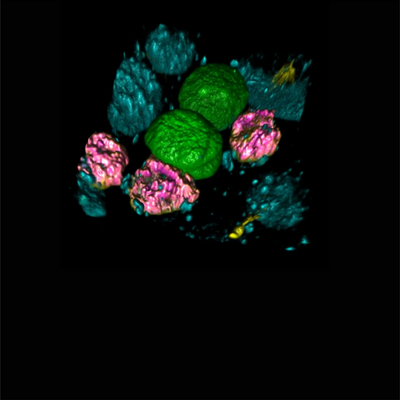Designing organelles to produce synthetic proteins
A research team led by biophysical chemist Professor Edward Lemke has engineered a designer organelle in a living mammalian cell in a new complex biological translation process. The created membraneless organelle can build proteins from natural and synthetic amino acids carrying new functionalities. For example, scientists might incorporate fluorescent building blocks into proteins via the organelle that allow a glimpse inside the cell using imaging methods. The research work now published in Science was a collaboration of Johannes Gutenberg University Mainz (JGU), the Institute of Molecular Biology (IMB) and the European Molecular Biology Laboratory (EMBL). Organelles are compartments in cells that, like the nucleus or the mitochondria, perform specific functions. The Lemke group has now created a new compartment in which special proteins can be synthesised using synthetic amino acids. This allows protein biosynthesis to occur in a well-defined place, which is important for working with synthetic amino acids. Researchers have already been able to create a new protein with the help of a synthetic, non-natural amino acid. However, incorporating the protein nonspecifically throughout the cell causes high cellular stress and the cell may be severely affected. The new orthogonal translation method avoids this problem. For the full press release on this finding click here and for the paper here
